Project Mercury: First Americans in Space
Project Mercury was America's first manned space program. 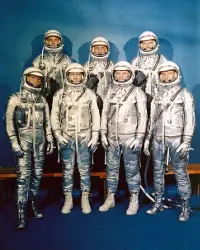
Congress had formed NASA in 1958, and the National Aeronautics and Space Agency had embarked on an ambitious satellite program that in its year had some successes (the successful launch of Explorer 1 and Vanguard 1. The Soviet Union was still streaking ahead in the Space Race, however, and so NASA decided to focus on manned missions. This was the genesis of Project Mercury, announced in 1959. 
Project Mercury introduced America and the rest of the world to the Mercury Seven: Scott Carpenter, Gordon Cooper, John Glenn, Gus Grissom, Wally Schirra, Alan Shepard, and Deke Slayton. NASA selected these seven according to a series of requirements and test results. Successful candidates:
Many applicants satisfied all of the requirements, so NASA scientists had to narrow the field further. They did so by imposing even more physical testing and some psychological testing. The announcement of the seven who made the final cut came on April 9, 1959. Interest in the program was high, and the astronauts and their families became instant celebrities. 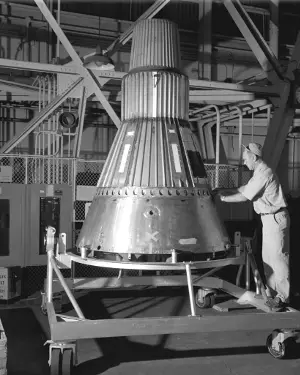
The cone-shaped, cylinder-topped capsules that the Mercury Seven would fly in were large enough for only one person to fit inside. Also inside the capsule on each mission were enough food, water, and oxygen for the occupant to use for a day. The astronaut wore various measuring devices so that ground crews could measure his vital signs. A heat shield covered one end. Also on the outside was a launch escape rocket, in case of difficulty. When the capsule re-entered Earth's atmosphere, the onboard computers would fire the craft's retrorockets; the final step was deployment of a parachute, to soften the capsule's descent into the water at the target. The descent was designed to have the occupant essentially lying on his back, the better to absorb the gravity forces with which he was being hit. 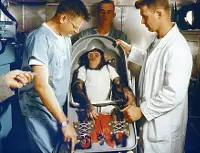
The first Mercury astronaut was not a person. It was Ham, a chimpanzee. NASA wanted to take no chances with the first Mercury launch, and so Ham blasted into space on Jan. 31, 1961. The craft went a bit higher and faster than it was supposed to and landed more than 400 miles off course. Ham was fine, however. 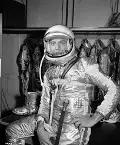
The next Mercury test flight was also devoid of humans. The unmanned flight of March 24 ticked all of the boxes, and NASA gave the go-ahead for a manned flight. Alan Shepard (left) was that first American in space, flying for all of 15 minutes, 28 seconds in Freedom 7 on May 5, 1961. He was not the person human in space, however. That honor belonged to Yuri Gagarin of the Soviet Union, whose Freedom1 capsule took him into Earth orbit on April 12. 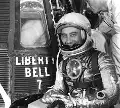
NASA carried on, sending Gus Grissom (right) into space in Liberty Bell 7 on July 21. Everything went fine on that flight except on the landing, the door blew open. Grissom was intact, if a bit rattled. Like Shepard, he was up for only 15 minutes, 37 seconds. 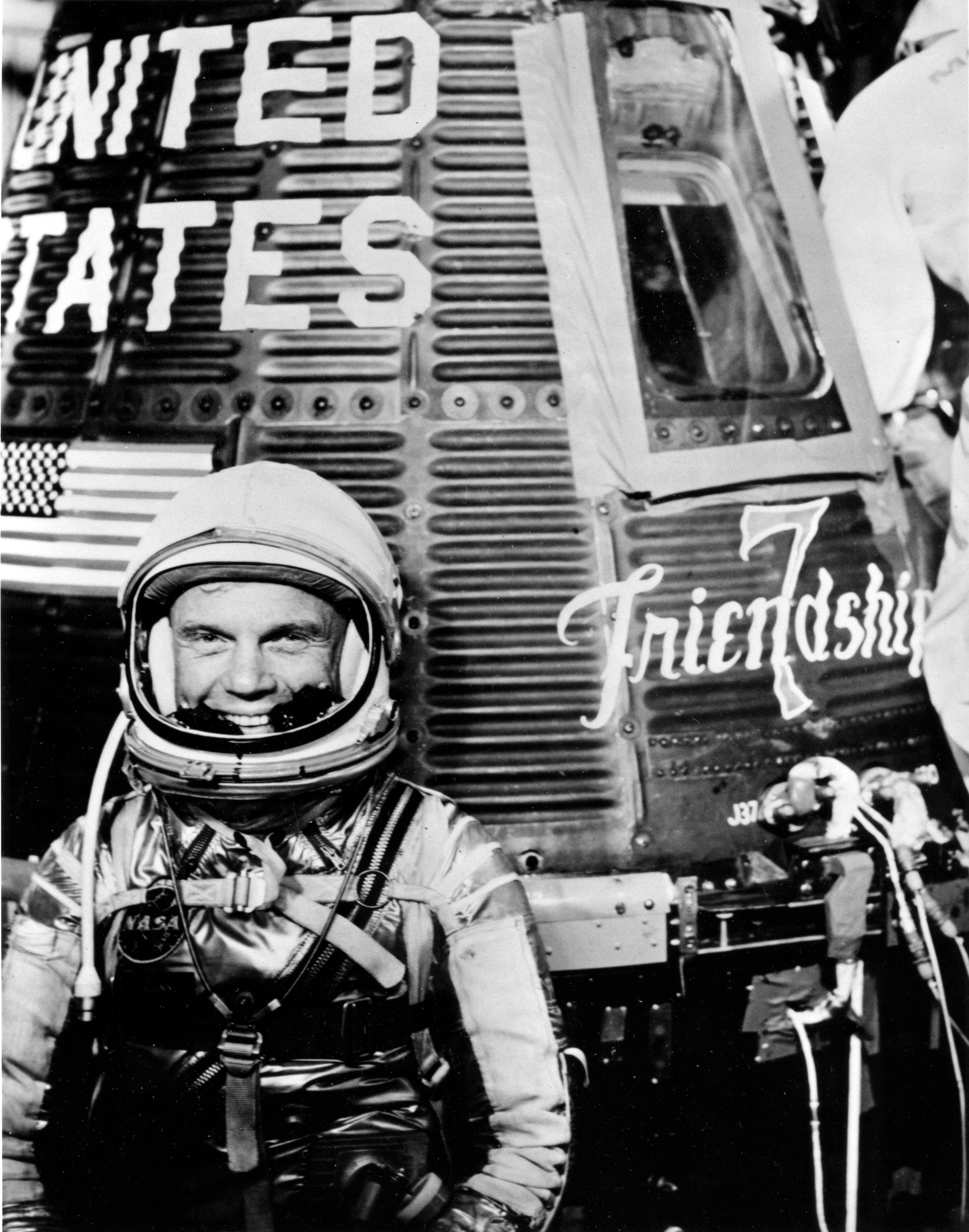
The first American to orbit was John Glenn (left), who achieved the feat in Friendship 7 on Feb. 20, 1962 and gained worldwide fame after his nearly five-hour flight. (It lasted 4 hours, 55 minutes, 23 seconds.) His journey was not without incident. A malfunction near the end of his first orbit necessitated Glenn to fly the capsule manually for the final two orbits. As well, NASA controllers informed Glenn that their systems showed a loose heat shield on the capsule; this turned out to be a false alarm, but it created some nervous moments for Glenn and NASA. 
Scott Carpenter (right) blasted off in Aurora 7 on May 24, 1962, and spent 4 hours, 56 minutes, 5 seconds in space. He, too, had splashdown problems, ending up 250 miles off course. 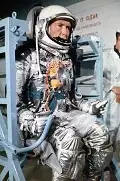
Wally Schirra (left) was next into space, achieving six Earth orbits in 9 hours, 13 minutes, 11 seconds in Sigma Only Deke Slayton did not go into space. Sidelined with a heart condition, he performed other valuable roles in later space programs initiatives and finally made it into space in 1975, as part of the Apollo-Soyuz joint mission between the U.S. and the Soviet Union. By the time that Schirra and Cooper were ready to fly, NASA was already well under way with its next manned mission, Project Gemini. The astronauts in that program would be some of those who had already flown in space. |
|
Social Studies for Kids
copyright 2002–2025
David White



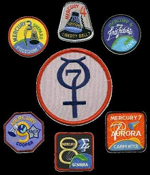 had to be age 39 or younger
had to be age 39 or younger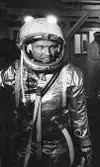 7 on Oct. 3, 1962. The last Mercury astronaut to fly in space was Gordon Cooper (right), who completed 22 orbits in Faith 7 on a two-day mission, May 15–16, 1963. His time in space was 34 hours, 19 minutes, 49 seconds.
7 on Oct. 3, 1962. The last Mercury astronaut to fly in space was Gordon Cooper (right), who completed 22 orbits in Faith 7 on a two-day mission, May 15–16, 1963. His time in space was 34 hours, 19 minutes, 49 seconds.
